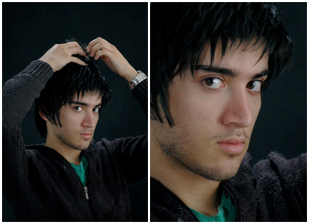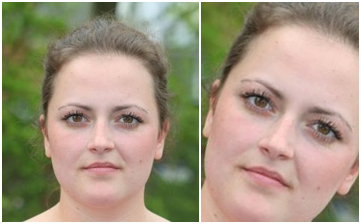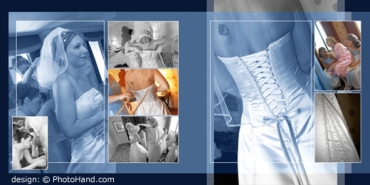Cropping is a useful tool for photo improvement. Though it sounds like an easy trick, cropping is more art than science and you need an eye for it. Still there are some general guidelines that can help you improve the visual effect of your photos.
Focus in!
Crop to bring the attention to the main object or person. In a portrait, the person’s eyes are the focal point. If the person is looking sideways, make sure to allow ‘space’ for her to look into or include enough of the object so the viewer knows what the the person is looking at. Otherwise the viewer will wonder what is missing.
Cropping also lets you remove the parts of the picture that didn’t turn well, let’s say because of awkward posing like in the example below.
Don’t amputate!
Cropping off people’s limbs at joints makes them look like amputees. Despite a very popular concern, it’s okay to crop part of the head if it’s a close portrait, as it will bring more attention to the eyes. Cutting between the joints is alright as long as it’s still possible for the mind’s eye to fill in the blanks to complete a person’s torso or limb.

An example of bad cropping where the hand cut off at the wrist appears detached. The only way to fix this effect is to re-crop the photo to a close portrait.
Combine tilting with cropping!
In some situations tilting can save the day when you realize the only photo that you like is still bad.
Remove distractions!
Remove the view-spoilers, parts of unidentifiable objects and things that distracts from the story the image is telling.

Someone's back was a view-spoiler in otherwise a nice portrait. The photo allowed for easy cropping that brought the new balance to the composition by seemingly adding to the empty space in the direction of the person' glance.
Watch the ‘negative space’!
This is the space around the central object. Cropping too tightly will make the photo look awkward.
Cropping Contextual Images
The images surrounding the person or the object in the center of attention serve as the context and create the picture story and establish the mood. It becomes a critical compositional component that need to be cropped to have a balanced visual effect. To reach the optimal result, it is recommended to follow the Rule of Thirds.
The Rule of Thirds: Divide the frame into thirds horizontally and vertically. The points where those lines intersect are good starting points to place the main subject. Essentially the primary subject is slightly off center.

In the original photo the person is put squarely in the middle and the background is cropped too tight leaving no breathing space above and below the figure. By cropping right below the hand (not to lose the gesture) and reducing the space on the left we re-balance the composition to bring it it in line with the Rule-of-Thirds.
You might find it impossible to follow all these rules as they start to clash when your photo has more than one problem. You would need to compromise or send it to us at PhotoHand and we’ll apply more advanced techniques to perfect your mementos.
………………………………………………………………………………………………
You might also want to read:
Cropping Photos to Match Printing Standards
Other Point-and-Click Tips






![Reblog this post [with Zemanta]](https://i0.wp.com/img.zemanta.com/reblog_e.png)

You must be logged in to post a comment.